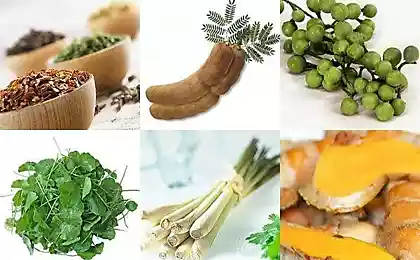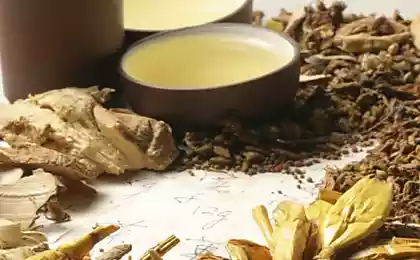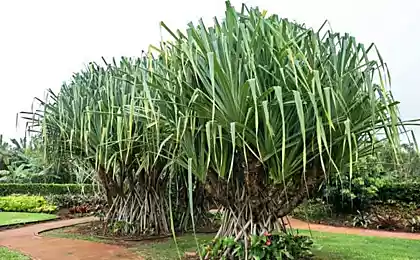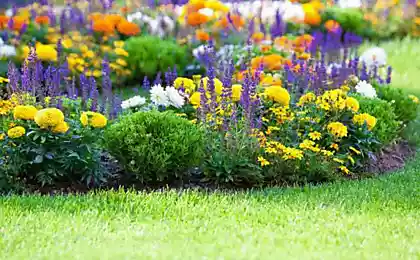181
Green Medicines, History of Pharmaceuticals
Divided into lobes, leaves are from liver disease, heart leaves are from heart disease, nuts, similar to the human brain, from headaches. What the plant looks like, from that disease it cures, it was once thought. According to this view, or, in other words, the doctrine of signatures, the medical suitability of the plant was determined. The panacea for all troubles were considered plants resembling the human body, of which the most famous was the European mandrake, whose forked roots resembled a human figure. Ginseng root has always been valued.
The doctrine of signatures has long been abandoned, but nevertheless modern medicine owes much to the first herbalists. The first extensive catalogs of plants were compiled, and this formed the basis of the science of botany. Until recently, medicine and botany were essentially a single science.
Doctors used to prescribe medicine and make it. They bought or harvested their own herbs. With the development of medicine, the production of drugs passed to pharmacists. Even today, the symbol of the pharmacist remains mortar and pestle. A good half of our medicines are of direct plant origin. Many other medicines are synthetic. But most of the synthetic drugs are analogues of plant products obtained by chemical means. They are made in laboratories and are cheaper. At the moment, the medicinal properties of no more than 10% of plants around the world have been examined.
The most famous discovery is a familiar drug from the bark of the cinna tree that stopped malaria. Few people know that before the temperature was knocked down by a decoction of willow bark. In the future, scientists isolated a substance called salicyl. On its basis, aspirin was synthesized. For the treatment of arthritis in the XX century, the hormone cartisone was discovered, but to obtain 1 g of cartisone, it was necessary to slaughter 1000 heads of cattle. A search began for plants containing chemicals from which cartisone could be obtained, and a method was developed to obtain cartisone from plant-based yam steroids.
Even the most effective drugs of our century, antibiotics, were derived from plants.
Some diseases - scurvy, rickets, are a direct consequence of a lack of vitamins. Many diseases can come from malnutrition. Preventing diseases by creating a normal regime for the body has now become one of the main tasks of medicine, and plants are also the main assistants here.
Plants provide the body with energy and building material, are the main source of vitamins and minerals. In this sense, all plants eaten are medicines. For example, black grapes and other fruits rich in pictins are immunomodulators. Cranberries are the strongest natural antiseptic. Mint acts calmingly and tones the vessels.
This list can go on indefinitely.
Source: /users/1617
The doctrine of signatures has long been abandoned, but nevertheless modern medicine owes much to the first herbalists. The first extensive catalogs of plants were compiled, and this formed the basis of the science of botany. Until recently, medicine and botany were essentially a single science.
Doctors used to prescribe medicine and make it. They bought or harvested their own herbs. With the development of medicine, the production of drugs passed to pharmacists. Even today, the symbol of the pharmacist remains mortar and pestle. A good half of our medicines are of direct plant origin. Many other medicines are synthetic. But most of the synthetic drugs are analogues of plant products obtained by chemical means. They are made in laboratories and are cheaper. At the moment, the medicinal properties of no more than 10% of plants around the world have been examined.
The most famous discovery is a familiar drug from the bark of the cinna tree that stopped malaria. Few people know that before the temperature was knocked down by a decoction of willow bark. In the future, scientists isolated a substance called salicyl. On its basis, aspirin was synthesized. For the treatment of arthritis in the XX century, the hormone cartisone was discovered, but to obtain 1 g of cartisone, it was necessary to slaughter 1000 heads of cattle. A search began for plants containing chemicals from which cartisone could be obtained, and a method was developed to obtain cartisone from plant-based yam steroids.
Even the most effective drugs of our century, antibiotics, were derived from plants.
Some diseases - scurvy, rickets, are a direct consequence of a lack of vitamins. Many diseases can come from malnutrition. Preventing diseases by creating a normal regime for the body has now become one of the main tasks of medicine, and plants are also the main assistants here.
Plants provide the body with energy and building material, are the main source of vitamins and minerals. In this sense, all plants eaten are medicines. For example, black grapes and other fruits rich in pictins are immunomodulators. Cranberries are the strongest natural antiseptic. Mint acts calmingly and tones the vessels.
This list can go on indefinitely.
Source: /users/1617




















